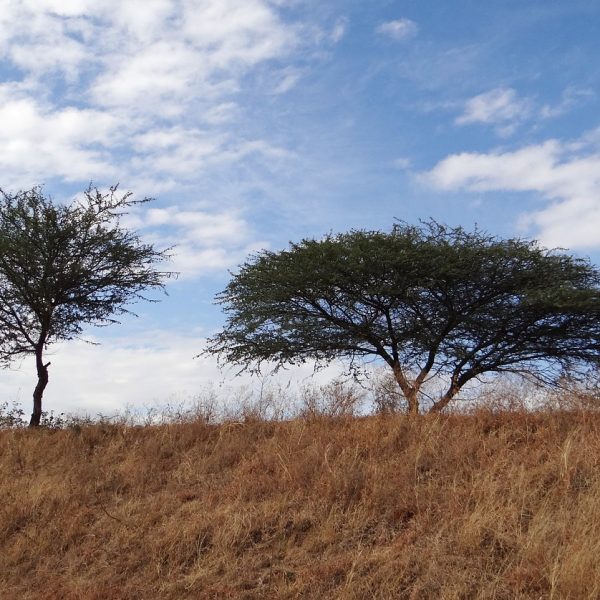These Are Our
Services
01.
Water management
Water management
Water management is essential for ensuring a reliable supply of clean and safe water for various uses such as drinking, irrigation, and industrial purposes. It also plays a critical role in protecting water resources from pollution and degradation.
Some of the key aspects of water management include:
Water conservation: This involves implementing measures to reduce water consumption, such as promoting the use of water-efficient appliances, fixing leaks, and practicing water-wise gardening.
Water treatment: This involves the use of various technologies to remove contaminants from water, such as sedimentation, filtration, and disinfection.
Water distribution: This involves the design and construction of infrastructure to transport water from its source to its intended users, such as pipes, pumps, and reservoirs.
Water storage: This involves the construction of facilities to store water for future use, such as dams, reservoirs, and groundwater recharge systems.
Water quality monitoring: This involves the regular testing of water to ensure that it meets safety standards and is free from contaminants.

02.
Rain Water
Harvesting
Rain Water
Harvesting
The basic principle of rainwater harvesting is to collect rainwater and direct it into a storage system. This can be done by using simple techniques such as building a rooftop catchment system, digging a shallow pit or trench, or constructing a larger underground tank or cistern. The collected rainwater can be used for a variety of purposes, including watering plants, washing clothes, flushing toilets, and even drinking after appropriate treatment.
Rainwater harvesting has numerous benefits, such as reducing dependence on unreliable water sources, reducing the strain on municipal water supplies, and providing an alternate source of water during droughts or emergencies. It also helps to reduce soil erosion and flooding, and promotes groundwater recharge, which is critical in areas where the water table is low.
Overall, rainwater harvesting is a simple, sustainable, and cost-effective way to conserve water and promote water security in communities around the world.

03.
Herbal garden
Typically, an herbal garden will include a variety of plants, such as herbs, shrubs, and trees, that have been traditionally used for medicinal purposes or for flavoring food. Common herbs found in herbal gardens include basil, thyme, rosemary, oregano, mint, and parsley, among others.
Herbal gardens may also include plants that have a strong aroma and are used for aromatherapy, such as lavender or chamomile. Additionally, some herbal gardens may include plants that are used for natural dyes or in the production of cosmetics.
Herbal gardens can be designed and organized in different ways, such as by plant family or by intended use. Some gardens may also incorporate elements of traditional garden design, such as paths, water features, or seating areas.
Overall, an herbal garden is a wonderful way to explore the diversity and benefits of plants, while also providing a source of fresh herbs and botanicals for cooking, medicinal use, or simply enjoyment.

04.
Organic Farming
Organic farming is a type of agricultural practice that focuses on cultivating crops and raising livestock in a way that is sustainable and environmentally friendly. Organic farmers rely on natural methods to control pests and diseases, maintain soil fertility, and promote healthy ecosystems.
Unlike conventional farming, which often relies on synthetic pesticides, herbicides, and fertilizers, organic farming uses natural and organic inputs to improve soil health and support plant growth. This includes practices like crop rotation, cover cropping, composting, and natural pest management techniques.
In organic farming, farmers work to maintain a balanced ecosystem by promoting biodiversity and avoiding practices that can harm the environment. For example, organic farmers may plant a variety of crops to promote soil health and attract beneficial insects that can help control pests naturally.

05.
Sparrow Preservation
Sparrows are small passerine birds that can be found all over the world. They play an important role in the ecosystem as seed eaters and insect predators. However, sparrows are facing numerous threats to their survival, including habitat loss, pollution, climate change, and predation by domestic and feral cats.
Here are some steps that can be taken to help preserve sparrows:
Provide habitat: Sparrows need suitable habitats to live in, such as shrubbery, hedges, and trees. Planting native plants and creating nesting sites such as birdhouses can help create an environment that is attractive to sparrows.
Reduce pesticide use: Pesticides can harm birds by reducing their food sources and making them more vulnerable to predators. Using natural pest control methods, such as planting insect-repelling plants or using beneficial insects like ladybugs and praying mantises, can help reduce the use of pesticides.
Keep cats indoors: Domestic and feral cats are major predators of sparrows and other small birds. Keeping cats indoors or providing them with a secure outdoor enclosure can help protect the birds.
Monitor and report bird deaths: If you notice dead or sick sparrows, report it to local authorities, such as wildlife rehabilitation centers or bird sanctuaries. They can investigate and take appropriate actions to help prevent further harm to the birds.
Support conservation efforts: Many organizations are working to conserve sparrows and their habitats. Donating to or volunteering with such organizations can help support their efforts to preserve these birds.
By taking these steps, we can help preserve sparrows and ensure that they continue to play their important role in the ecosystem.

06.
AYUSH Promotion
AYUSH is an acronym for Ayurveda, Yoga & Naturopathy, Unani, Siddha, and Homoeopathy. It is a governmental body in India that was established to promote and regulate traditional Indian medicine systems. The Ministry of AYUSH was created in 2014 to develop, promote, and regulate these systems of medicine.
The AYUSH systems of medicine have been a part of India’s healthcare system for centuries and have gained popularity in recent years due to their holistic approach to health and wellness. These systems of medicine aim to balance the mind, body, and spirit and have been used to treat various health conditions, including chronic diseases.
The government of India has taken several initiatives to promote AYUSH, including establishing AYUSH hospitals and research centers, providing financial support for research and development in AYUSH, and promoting education and training in AYUSH. The government has also taken steps to regulate the practice of AYUSH to ensure the safety and efficacy of these traditional medicine systems.
While AYUSH may offer some benefits, it’s important to note that some AYUSH therapies lack scientific evidence to support their effectiveness or safety. It’s important to approach AYUSH with caution and to consult with a qualified healthcare professional before using any AYUSH therapy.

07.
Wasteland Management
Waste land rejuvenation refers to the process of restoring degraded or barren land to a functional and productive state. This can be done through various means, including reforestation, soil conservation, and the introduction of new plant species.
There are several benefits to waste land rejuvenation, including:
Soil conservation: Waste land rejuvenation helps to prevent soil erosion and loss, which can lead to increased productivity and improved soil health.
Biodiversity: By restoring degraded land, waste land rejuvenation helps to promote biodiversity and preserve ecosystems.
Water conservation: Restoring degraded land can help to improve water quality and quantity, as well as reduce the risk of flooding.
Climate change mitigation: Rejuvenating waste land can help to mitigate the impacts of climate change by sequestering carbon and reducing greenhouse gas emissions.
There are several approaches to waste land rejuvenation, depending on the type of land and the desired outcome. Some common strategies include:
Reforestation: This involves planting trees and other vegetation on degraded land to restore its ecological functions.
Soil conservation: This involves implementing measures such as terracing, contouring, and mulching to prevent erosion and improve soil health.
Agroforestry: This involves integrating trees and crops to restore degraded land and promote sustainable agriculture.
Ecological restoration: This involves restoring ecosystems to their natural state by removing invasive species, reintroducing native plants, and restoring natural water systems.
Waste land rejuvenation is an important process for restoring degraded land and promoting sustainable land use. By implementing appropriate strategies and practices, we can help to restore degraded land, preserve ecosystems, and promote sustainable development.

08.
Acacia Nilotica Eradication
Acacia nilotica is a tree species that is native to Africa and the Middle East. While it has some ecological and economic benefits, it is also considered an invasive species in some areas, particularly in Australia and parts of India.
Eradicating Acacia nilotica can be a challenging task, as the tree is known for its ability to regenerate quickly and produce large quantities of seeds. However, several methods have been developed to control its spread and reduce its impact on local ecosystems.
Chemical Control: One approach to eradicating Acacia nilotica is through the use of chemical control methods, such as herbicides. This method involves applying chemicals directly to the tree or to the soil surrounding it to kill the roots. However, this method can also harm other plants and wildlife in the area.
Physical Control: Physical control methods involve physically removing the tree, either by cutting it down or digging up the roots. This can be an effective way to eradicate small populations of Acacia nilotica, but it is not practical for large infestations.
Biological Control: Biological control methods involve introducing natural enemies of the tree to control its spread. This can include insects, fungi, or other organisms that feed on the tree or its seeds. However, this method can also have unintended consequences, as the introduced organisms may also harm other plants or wildlife.
Integrated Control: Integrated control methods involve combining several different approaches to eradicating Acacia nilotica. This can include using chemical, physical, and biological control methods together to achieve the best results while minimizing harm to the environment.
In conclusion, eradicating Acacia nilotica can be a difficult task, but several methods exist to control its spread and reduce its impact on local ecosystems. The choice of method will depend on the size of the infestation, the location, and the environmental impact of each approach.

09.
Sports Development
Sports development is an important aspect of a student’s education, as it promotes physical fitness, mental health, teamwork, and leadership skills. Here are some ways to promote sports development among students:
Encourage participation in school sports teams: Schools should offer a variety of sports programs and encourage students to join teams. This can include both competitive and non-competitive sports. Students should be allowed to participate regardless of their skill level.
Provide adequate facilities and equipment: Schools should provide adequate sports facilities and equipment for students to use. This can include sports fields, gyms, and equipment such as balls, nets, and uniforms.
Organize sports events: Schools can organize sports events such as inter-school competitions, intramural tournaments, and sports days. This helps students to develop their skills, compete with their peers, and have fun.
Hire qualified coaches: Schools should hire qualified coaches who can teach students the skills and strategies needed to excel in their chosen sport. Coaches should also be able to motivate and inspire students to work hard and improve.
Promote sportsmanship: Schools should promote sportsmanship among students. This means teaching students to respect their opponents, follow the rules, and play fairly. Students should also be encouraged to congratulate their opponents after a game, win or lose.
Emphasize the importance of physical activity: Schools should emphasize the importance of physical activity and encourage students to lead an active lifestyle. This can include offering physical education classes and promoting sports and recreational activities outside of school hours.
By promoting sports development among students, schools can help them to develop lifelong skills, stay physically fit, and build relationships with their peers.

10.
Scientific Tours
Educational tours are a great way to enhance a student’s learning experience. Here are some benefits of educational tours for students and ways to plan them:
Exposure to real-world experiences: Educational tours provide students with the opportunity to learn from real-world experiences outside of the classroom. This exposure to different environments and cultures can broaden their perspective and stimulate their curiosity.
Enhances classroom learning: Educational tours can help reinforce and enrich classroom learning. For example, a history class trip to a historical site can help students better understand the significance of an event or person.
Promotes social skills: Educational tours also promote social skills such as teamwork, communication, and leadership. Students learn to work with their peers and teachers in a different setting, which can help develop their interpersonal skills.
Fun and enjoyable: Educational tours can be fun and enjoyable for students. They can look forward to the trip and experience new things, which can create a memorable learning experience.

